You’re tired of rigid 3D prints that crack under pressure, and you need something that bends, stretches, and bounces back like real rubber. TPU filaments promise flexibility, but not all deliver the same results. Shore hardness ratings, print compatibility, and material consistency vary dramatically between brands. The wrong choice means wasted time, failed prints, and frustration. However, five specific TPU filaments consistently outperform the competition, transforming your printer into a flexible manufacturing powerhouse.
ATARAXIA ART Flexible PLA 3D Printer Filament 1.75mm (Light Brown)
If you’re searching for exceptional flexibility in your 3D printing projects, ATARAXIA ART’s Flexible PLA filament delivers remarkable stretch capabilities that surpass traditional TPU materials. With 89A shore hardness and 500-600% elongation at break, you’ll achieve incredible flexibility for phone cases, shoe insoles, and decorative items.
This 1.75mm filament works with 99% of FDM printers, including both Bowden and Direct Drive systems. You’ll appreciate the clog-free, bubble-free formula that prints smoothly at 190-210°C. The included vacuum-sealed storage bags protect against moisture while accommodating two spools. Available in sixteen Pantone-matched colors, it offers dimensional accuracy of +/- 0.03mm for consistent results.
Best For: 3D printing enthusiasts and professionals who need highly flexible filament for creating phone cases, shoe insoles, belts, and decorative items that require exceptional stretch and bendability.
Pros:
- Exceptional flexibility with 89A shore hardness and 500-600% elongation at break, surpassing traditional TPU materials
- Universal compatibility with 99% of FDM printers including both Bowden and Direct Drive extruders
- Premium storage solution with vacuum-sealed bags that protect against moisture and can hold two spools
Cons:
- Some users experience issues with retraction settings and stringing during printing
- Customer service responsiveness has been inconsistent based on user feedback
- Price sensitivity among users who prefer pricing under $20 per kg for repeat purchases
FLASHFORGE PLA Flexible 3D Printer Filament 1.75mm (1Kg Spool)
FLASHFORGE’s PLA Flexible filament bridges the gap between traditional PLA and challenging TPU materials, making it your ideal starting point if you’re new to flexible printing or working with Bowden extruders that struggle with softer materials.
You’ll appreciate its impressive elasticity—stretching up to four times its original length—perfect for phone cases, insoles, and decorative projects. The filament doesn’t require special settings or heated beds, reducing warping concerns. However, you’ll need to dry it for 24 hours before printing since it’s prone to moisture absorption.
Print at 220℃ nozzle temperature, 60℃ bed, and 40mm/s speed for best results.
Best For: Beginners new to flexible printing and users with Bowden extruders who want an easier alternative to TPU for creating phone cases, insoles, and decorative projects.
Pros:
- High elasticity stretching up to 4x original length while remaining beginner-friendly and easier to print than TPU
- Compatible with both Bowden and direct drive extruders without requiring special settings or heated beds
- Engineered for smooth, clog-free printing with high dimensional accuracy (99% within 1.75mm +/- 0.02mm tolerance)
Cons:
- Prone to moisture absorption requiring 24-hour drying before printing for optimal results
- Mixed user reviews reporting clogging issues and difficulty finding optimal settings despite being marketed as beginner-friendly
- Inconsistent print quality with some users experiencing variability compared to other flexible filament brands
Siraya Tech Flex TPU Filament – 85A Shore (Black, 1kg)
The Siraya Tech Flex TPU Filament’s 85A Shore hardness makes it the perfect choice for makers who need maximum flexibility in their 3D prints. You’ll appreciate its superior elasticity and toughness, which creates durable, bendable prints that outperform typical TPU materials. The high flow properties let you print faster than standard 95A TPU, saving valuable time on projects.
You can trust this filament’s safety since it’s ISO 10993 tested for biocompatibility, making it suitable for wearables and external-use devices. The moisture-resistant aluminum packaging guarantees three years of shelf life while maintaining consistent print quality. Whether you’re creating custom footwear or medical devices, this versatile filament works with most 3D printers.
Best For: Makers and professionals who need highly flexible, biocompatible TPU filament for creating custom footwear, protective gear, wearables, and medical devices that require maximum bendability and durability.
Pros:
- Superior flexibility with 85A Shore hardness and high flow properties enable faster printing speeds than standard 95A TPU
- ISO 10993 tested for biocompatibility, making it safe for external-use wearables and medical device applications
- Moisture-resistant aluminum packaging ensures 3-year shelf life and maintains consistent print quality over time
Cons:
- Limited to black color option only, restricting design versatility for projects requiring different colors
- TPU materials generally require more precise printer calibration and slower speeds compared to rigid filaments like PLA
- Higher cost per kilogram compared to standard rigid 3D printing filaments due to specialized material properties
PRILINE TPU Flexible 3D Printer Filament 1.75mm (1KG Spool, Black)
PRILINE’s TPU Flexible 3D Printer Filament delivers exceptional versatility for makers who need reliable prints ranging from phone cases to automotive gaskets. This 98A shore hardness TPU offers excellent flexibility while maintaining structural integrity for RC components and sealing applications. You’ll appreciate the clog-free formula that guarantees smooth printing with minimal stringing issues. The filament works seamlessly with most FDM printers using recommended settings of 230°C hotend and 70°C bed temperatures. PRILINE backs their product with a lifetime guarantee, giving you confidence in quality and performance. Users consistently praise its ease of use and reliable layer adhesion across various printer brands.
Best For: Makers and hobbyists who need reliable flexible filament for printing phone cases, automotive gaskets, RC components, and other applications requiring durability and structural integrity.
Pros:
- Clog-free formula with minimal stringing and excellent layer adhesion for smooth printing experience
- 98A shore hardness provides optimal balance of flexibility and structural strength for various applications
- Lifetime guarantee and positive customer service support with easy returns and refunds
Cons:
- Some users experience clogging issues, particularly when using with AMS systems
- Color consistency problems reported with changes in sheen and appearance over time
- Requires specific storage conditions with desiccants and pre-printing drying process for optimal performance
Comgrow TPU Filament, 1.75mm, 95A Soft TPU Flexible 3D Printer Filament Black 1kg
Comgrow’s 95A Shore hardness TPU filament delivers exceptional flexibility and durability, making it an ideal choice for makers who need reliable soft materials for functional prints like phone cases, gaskets, or protective equipment. You’ll get consistent results with its precise +/- 0.02mm dimensional accuracy and can print effectively at speeds up to 200mm/sec. The filament works best at 210-230°C with direct drive extruders. You’ll appreciate its minimal stringing, pleasant wood-like printing aroma, and shiny finish when using glass build plates. Users consistently report excellent reliability across multiple spools, making this a dependable go-to option for flexible printing projects.
Best For: Makers and 3D printing enthusiasts who need reliable flexible filament for functional prints like phone cases, gaskets, protective equipment, and custom parts requiring durability and consistent quality.
Pros:
- Excellent dimensional accuracy (+/- 0.02mm) and can print at high speeds up to 200mm/sec with minimal stringing
- Consistent reliability across multiple spools with easy moisture recovery and pleasant printing experience
- Produces high-quality prints with shiny finish on glass beds and works well with most direct drive FDM printers
Cons:
- Requires direct drive extruders for optimal performance, limiting compatibility with Bowden tube setups
- Initial adhesion challenges may require proper bed leveling, tuning, and additional aids like glue stick or rafts
- Slightly more expensive compared to other TPU filament brands on the market
Factors to Consider When Choosing the Most Flexible TPU Filaments for Rubber-Like Prints
When you’re selecting TPU filaments for rubber-like prints, you’ll need to evaluate the Shore hardness rating to determine flexibility levels and check elongation at break percentages for stretch capabilities. You must also verify your printer’s extruder compatibility since flexible filaments require specific hardware configurations and adjusted temperature settings. Additionally, you’ll face print speed limitations that directly impact print quality and success rates with TPU materials.
Shore Hardness Rating
Shore hardness rating serves as the primary indicator of TPU filament flexibility, with values typically ranging from 85A to 98A on the durometer scale. When you’re selecting TPU for rubber-like prints, you’ll find that lower Shore values deliver greater flexibility. At 85A, you’ll get superior elasticity perfect for applications requiring significant stretch, like footwear or gaskets. This softer rating allows maximum compressibility and bending.
Conversely, 98A filaments offer balanced flexibility and durability, making them ideal for structural parts needing wear resistance. Remember that flexibility decreases as hardness increases – it’s an inverse relationship. You’ll want softer ratings for maximum rubber-like characteristics, while harder ratings provide more rigidity when you need structural integrity without completely sacrificing flexibility.
Elongation at Break
Elongation at break measures how much you can stretch a TPU filament before it snaps, expressed as a percentage of its original length. Flexible TPU filaments deliver impressive elongation values between 500% and 600%, meaning they can stretch five to six times their original length without breaking. This exceptional stretchability directly translates to increased flexibility and durability in your prints.
Higher elongation values indicate better rubber-like properties, making your printed parts more resilient to stress and deformation. When you’re planning projects that’ll endure repeated bending, stretching, or compression, prioritize TPU filaments with higher elongation ratings. Traditional materials can’t match TPU’s superior stretchability, which is why you’ll want to take into account elongation at break as an essential factor when selecting filament for demanding applications.
Printer Extruder Compatibility
How well your extruder handles flexible TPU filaments can make or break your printing success. Most TPU filaments work with both Bowden and direct drive extruders, giving you flexibility in printer choice. However, direct drive systems typically offer superior control over flexible materials, reducing jamming and improving print quality compared to Bowden setups.
If you’re using a Bowden extruder, you’ll likely need to adjust retraction settings since the longer filament path can cause feeding issues. Confirm your extruder’s gear and drive system provide adequate grip on flexible materials – insufficient grip leads to slipping and under-extrusion problems.
Always verify your hotend can reach the recommended temperature range for your specific TPU filament to confirm proper melting and smooth extrusion.
Temperature Settings Required
Getting your temperature settings right proves just as important as extruder compatibility for successful TPU printing. You’ll typically need nozzle temperatures between 210-230°C for most flexible TPU filaments, though some formulations work well at lower ranges of 190-210°C. Check your specific filament’s requirements before starting.
Your bed temperature should fall between 0-60°C, with heated beds helping reduce warping issues. Don’t skip the drying process—condition your TPU filament at 60°C for several hours before printing to eliminate moisture problems that’ll ruin your prints.
Print speeds between 40-90mm/s work best, but you’ll need to adjust based on your filament’s characteristics and printer capabilities. Start conservative and increase gradually.
Print Speed Limitations
While many 3D printing materials can handle high speeds without issue, TPU filaments demand a more cautious approach to achieve quality rubber-like prints. You’ll typically need to print between 50-90mm/sec, though some advanced formulations can handle speeds up to 200mm/sec. Slower speeds help prevent common problems like clogging and stringing that plague flexible materials.
Your TPU’s shore hardness rating affects ideal speed—harder variants tolerate faster printing while softer formulations require gentler handling. You’ll want to prioritize dimensional accuracy, as quality TPU filaments achieve +/- 0.02mm tolerances when printed at appropriate speeds. Don’t forget to fine-tune your retraction settings alongside speed adjustments, as these variables work together to determine your final print quality and consistency.
Moisture Storage Requirements
Since moisture stands as TPU’s greatest enemy, you’ll need to implement strict storage protocols to maintain your filament’s printing performance and flexibility. Store your TPU in sealed containers with desiccants or vacuum-sealed bags when not actively printing. This prevents moisture absorption that causes bubbling, stringing, and compromised flexibility.
Look for TPU brands offering moisture-resistant packaging like aluminum resealable bags, which extend shelf life and maintain consistent quality. You should dry filaments for several hours before printing, as moisture impacts both flexibility and bed adhesion properties.
Regularly inspect your filament for moisture absorption signs, including texture changes or altered appearance. These visual cues indicate when re-drying becomes necessary to restore peak printing performance.
Frequently Asked Questions
What Print Bed Temperature Works Best for TPU Filaments?
You’ll want to set your print bed temperature between 40-60°C for TPU filaments. Start around 50°C and adjust based on your specific brand and adhesion results you’re getting.
Can TPU Filaments Be Printed on Glass Beds Without Adhesion Issues?
You’ll face adhesion challenges with TPU on glass beds since it doesn’t stick well naturally. You’ll need adhesion aids like hairspray, glue stick, or painter’s tape for successful prints.
How Do You Prevent TPU Filament From Jamming in the Extruder?
You’ll prevent TPU jams by reducing print speed to 20-30mm/s, lowering retraction distance to 1-2mm, ensuring proper filament path tension, and using direct drive extruders instead of Bowden systems for better control.
What’s the Maximum Print Speed Recommended for Flexible TPU Materials?
You’ll want to keep your print speed between 10-30mm/s for TPU materials. Don’t exceed 20mm/s if you’re new to flexible filaments, as slower speeds prevent jamming and guarantee consistent extrusion quality.
Do TPU Prints Require Supports or Can They Bridge Gaps Effectively?
You’ll find TPU bridges gaps surprisingly well due to its flexibility, often eliminating support needs for moderate overhangs. However, you should still use supports for steep angles exceeding 45 degrees or complex geometries.
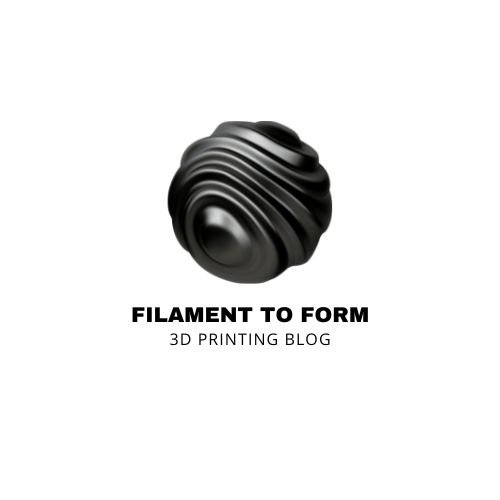
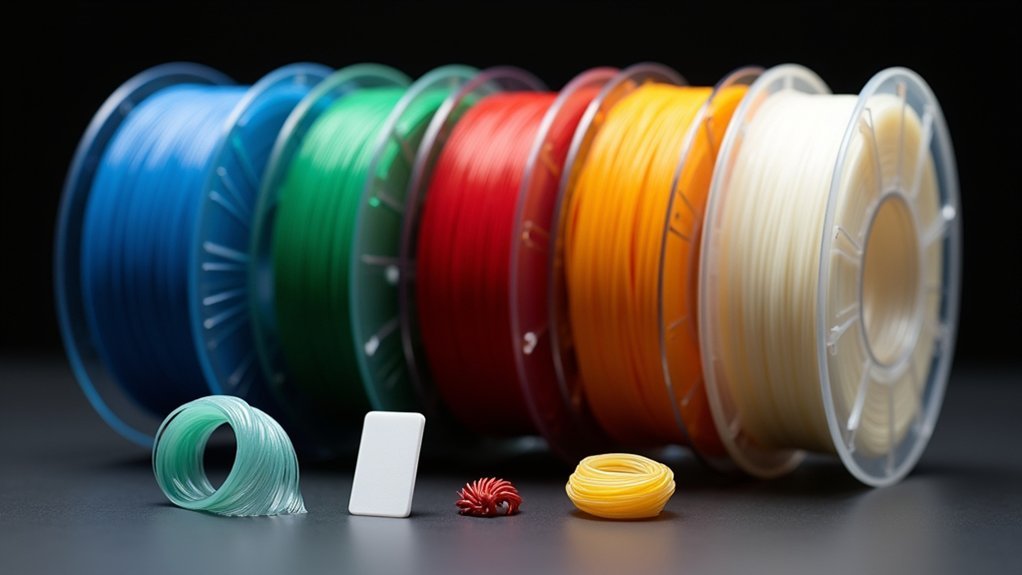
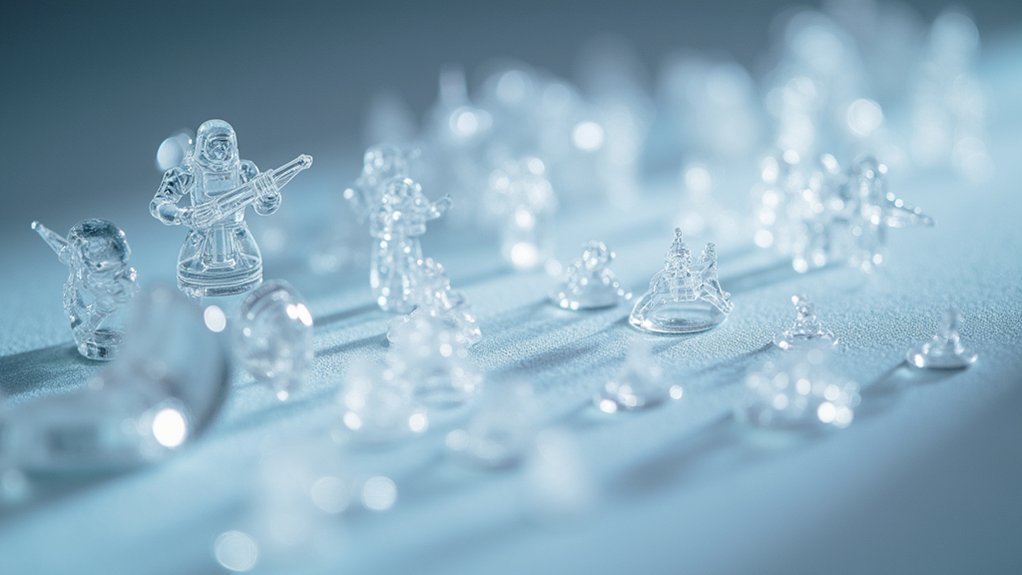
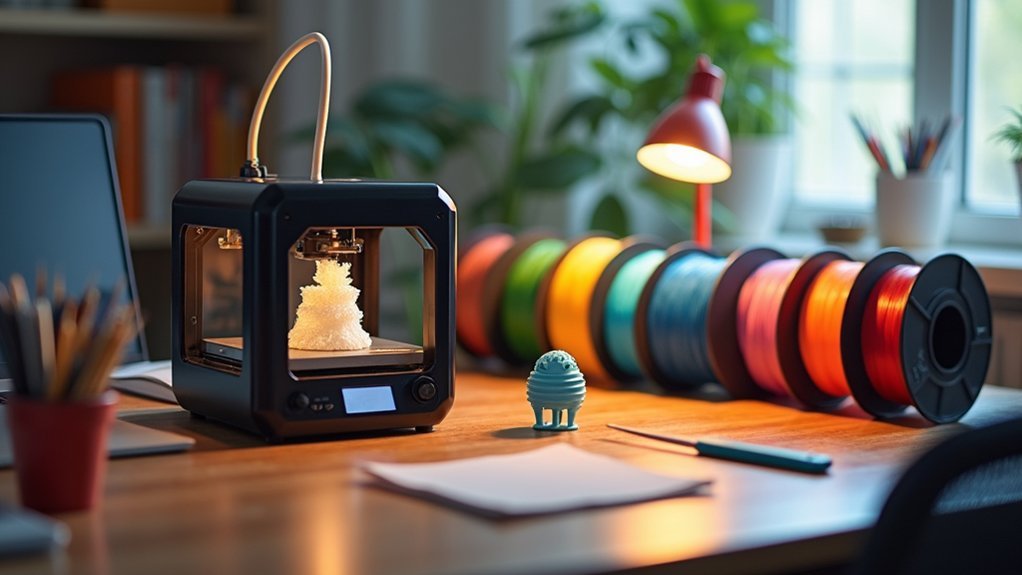
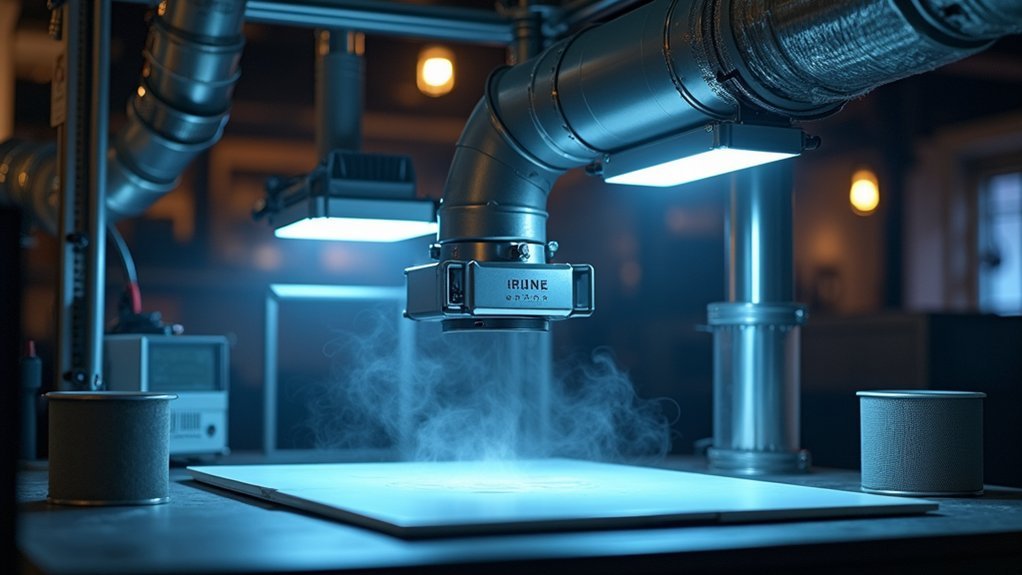
Leave a Reply